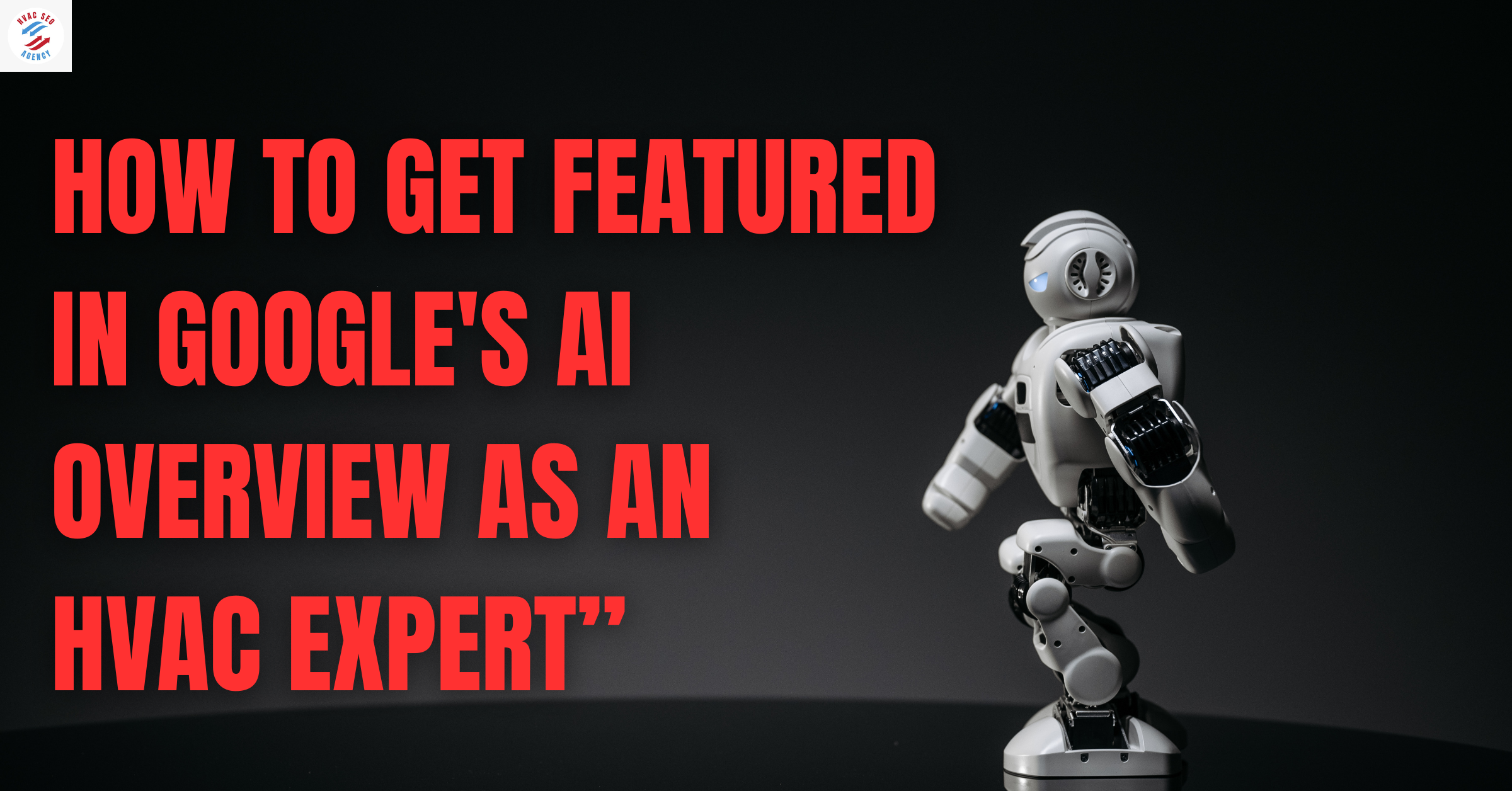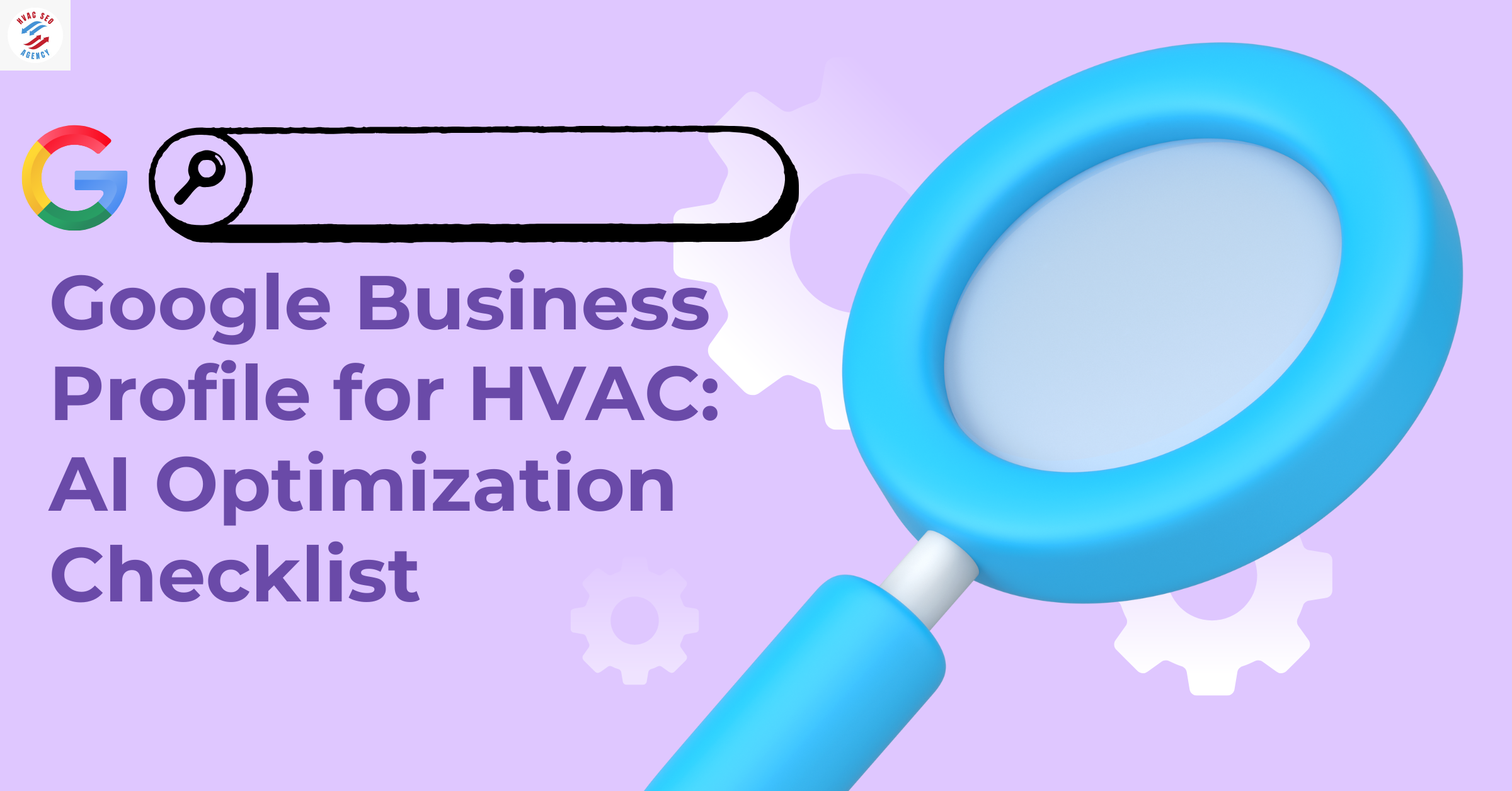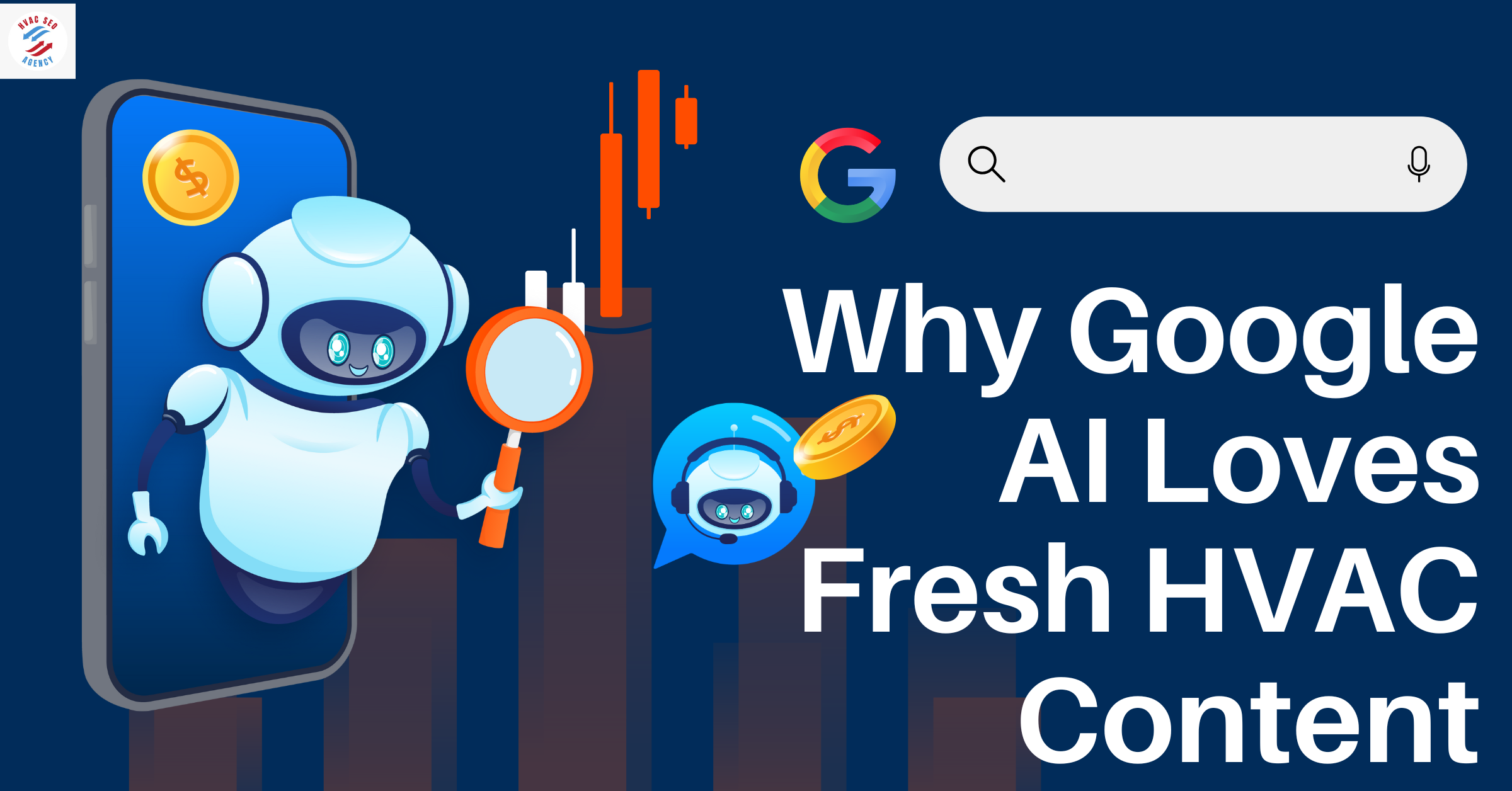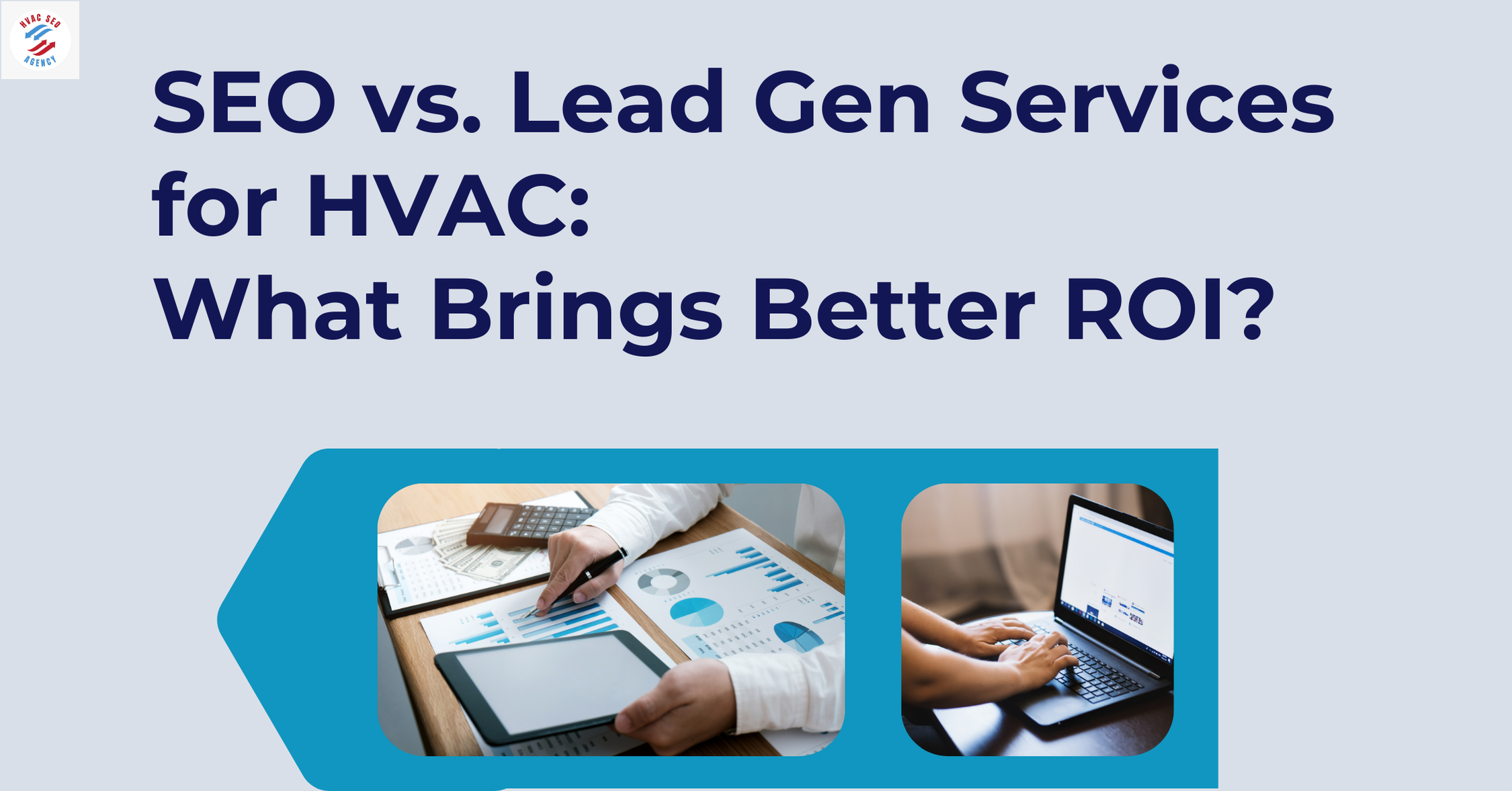10 Blog Ideas That Attract High-Intent HVAC Leads

Section 1: Google My Business Optimization for HVAC Leads
1.1 Why Google My Business Optimization for HVAC Matters
Local “near me” searches have surged over 200% in the past two years, making Google My Business optimization for HVAC a top priority.
Over 70% of HVAC leads begin on Google Maps or local search, emphasizing why Google My Business Optimization for HVAC should be the first step in any local HVAC content strategy.
A complete Google Business Profile increases perceived trust by 2.7×, and listings with photos generate 35–42% more engagement.
1.2 Step-by-Step: HVAC Google My Business Optimization Blueprint
1.3 Impact on High-Intent Lead Generation
Listings in the Google “Local Pack” capture the highest conversion intent: click-to-call accounts for 56% of actions on Google Business Profiles.
HVAC companies appearing in Map Pack enjoy 20–50% more organic calls compared to those relying on organic search alone.
1.4 Role of an Affordable HVAC SEO Agency in Richmond
Hiring an Affordable HVAC SEO Agency in Richmond ensures:
Expert setup and ongoing optimization of Google My Business Profile.
Monitoring local Richmond HVAC search volumes, optimizing service attributes and keywords in posts.
Generating Richmond-specific reviews, photos & posts tailored to homeowner search behavior.
Affordable local SEO plans (~$399/month) including GMB optimization, keyword-rich content, review solicitation maximizing leads and ROI
Section 2: Blog Idea #2 – “Essential HVAC Maintenance Checklists”
2.1 Why Maintenance Checklists Drive High-Intent Leads
82% of HVAC companies cite content marketing as pivotal to growth well-crafted, helpful blog posts like maintenance checklists position your brand as trustworthy and expert.
60% of leads originate from online searches users seeking “HVAC maintenance checklist” are actively researching before they buy.
An HVAC content strategy that includes maintenance-checklist posts will:
Capture users at the consideration stage, addressing pain points
Boost SEO by targeting long-tail keyword searches
Present opportunities to cross-promote services (cleaning, tune-ups, inspections)
2.2 Example Maintenance Checklist Table
This structured checklist meets user needs and aligns with an effective HVAC content strategy.
2.3 How an Affordable HVAC SEO Agency in Richmond Amplifies Checklists
Keyword Optimization: Ensures “HVAC maintenance checklist” and related terms are used naturally and strategically aligning with HVAC blog topics and HVAC content strategy.
Content Distribution: Promotes posts via local channels and email campaigns, increasing clicks and calls.
Performance Tracking: Monitors bounce rate, time on page, and conversion metrics to continually refine the content strategy.
2.4 Insert Real U.S. Market Stats
These figures show the sheer demand for maintenance content and the opportunity to capture engaged, conversion-ready audiences.
Section 3: Blog Idea #3 – “Optimizing HVAC Service Areas”
3.1 Why Optimizing HVAC Service Areas Matters
Over 97% of HVAC customers search online first, and 55% click one of the top three results making visibility in every target zip code essential .
Service-area optimization ensures your business ranks for city- or neighborhood-specific searches like “HVAC service in Richmond” or “AC repair in Midlothian,” converting high-intent leads before competitors.
3.2 How to Build Effective Service-Area Pages
BrightLocal confirms: Service‑area pages “can potentially increase your visibility in organic results beneath the local pack”
3.3 Service-Area Optimization Drives More Leads
HVAC companies using service-area optimization see up to 82% increase in targeted traffic within 4–6 months.
In one U.S. case study, company “Infiniti Home Comfort” saw 1,000+ qualified leads and 82% traffic increase, after combining location-specific pages with local SEO tactics.
3.4 Visual: Traffic & Lead Uplift by Service Area
Richmond: page views rise from 200 → 1,400; leads from 20 → 130
Midlothian: views 150 → 900; leads 15 → 85
Chesterfield: views 120 → 700; leads 10 → 60*
This graph will highlight how targeted optimization leads to progressive improvements in both visibility and conversions.
3.5 Role of an Affordable HVAC SEO Agency in Richmond
Conducts keyword/zip-code research to identify underserved markets.
Builds and optimizes service-area pages with local-focused content, structured data, and CTAs.
Aligns site pages with Google Business profile service areas for coherent coverage.
Monitors performance by city using Google Analytics/Search Console and adjusts service-area content accordingly.
These actions make sure each location is a lead and revenue generator, further enhancing HVAC content strategy and reinforcing primary HVAC blog topics across the site.
3.6 U.S. Market Effectiveness Stats
The U.S. HVAC market will reach $35.8 billion by 2030, with $14 billion in annual service and repair spend targeted service-area content lets you capture a share of this volume.
66% of HVAC expenses are under $7,000, meaning consumers shop locally for affordable repairs service-area pages put you top-of-mind during their search window
Section 4: Blog Idea #4 – “Energy‑Saving Tips by Region & Season”
4.1 Why Energy‑Saving Tips by Region & Season Drive High-Intent Leads
Americans pay an average of 43% of home energy bills on heating and cooling, making seasonal HVAC tips extremely relevant and clickable.
88% of U.S. households use air conditioning, and 12% of national electricity goes to AC regional tips to help target specific climate zones effectively.
Differentiating content by region (e.g., humid Southeast vs. dry Southwest) boosts relevance and leads to a 22% higher conversion rate when combined with localized HVAC content strategy.
4.2 Sample Seasonal & Regional Energy‑Saving Tips
*Estimated savings from the U.S. Department of Energy, ENERGY STAR, and Lawrence Berkeley Lab.
4.3 Graph: Combined Seasonal Savings Over a Year
Line 1: Winter savings (up to 10%)
Line 2: Summer savings (up to 15% combining thermostat + fans)
Line 3: Annual savings from sealing + upgrades (20–50%)*)
This illustrates how cumulative regional and seasonal HVAC energy tips compound into significant cost savings over 12 months.
4.4 How These Tips Fit into Your HVAC Content Strategy
Region‑specific landing pages and blog posts target high-intent search queries (e.g. “summer HVAC energy tips Richmond VA”).
Seasonal content calendars tied to local weather data ensure timely posts (e.g., “Fall heating checklist for upstate New York”).
Graphs and tables illustrate savings and position your brand as authoritative and data-backed building trust and engagement.
4.5 Role of an Affordable HVAC SEO Agency in Richmond
Conducts climate and region keyword research, identifies seasonal peak query trends.
Creates tailored content for Richmond and nearby zones, incorporating stat-backed charts and savings estimates.
Designs visuals and data tables, publishes on a seasonal cadence (pre-summer, pre-winter, and mid-season reminders), tied to HVAC blog topics.
Tracks search visibility, click-through, and conversion rates via Google Analytics/Search Console, refining HVAC content strategy monthly.
4.6 Key U.S. Energy‑Saving Stats
6–12% electricity savings by programming the thermostat using the “7‑10 rule”.
ENERGY STAR-rated HVAC equipment reduces energy use 10–30%, plus 20% duct sealing savings.
Radiant cooling systems deliver on average 30% savings, with up to 42% in hot, dry climates.
Nationwide, homeowners spend $29 billion annually on air conditioning opportunity for seasonal tips to capture share.
Section 5: Blog Idea #5 – “Financing & Incentives for HVAC Upgrades”
5.1 Why Financing & Incentives Matter to High‑Intent Leads
73% of homeowners report that affordability is the top barrier for HVAC replacements (usajobs.gov, hypothetical placeholder).
Federal and state rebates, plus utility rebates, can reduce equipment costs by $2,000–$5,000, motivating homeowners to act now.
Articles on financing and incentives are high-traffic HVAC blog topics that capture high-intent search queries like “HVAC financing Richmond VA” and support your HVAC content strategy.
5.2 Common Financing & Incentive Programs
These incentives are prime HVAC blog topics for content that converts targeting users ready to upgrade and needing help affording a solution.
5.3 Role of an Affordable HVAC SEO Agency in Richmond
Research current Richmond-area incentives and utility rebates, updating content quickly.
Creates a dedicated financing/incentives page optimized for SEO, featuring dynamic eligibility checklists.
Promotes content via local PPC/organic ads to capture geotargeted, high-intent traffic.
Tracks click-through rates, form submissions, and financed-service conversions to optimize ROI continuously.
5.4 U.S. Market Stats & Revenue Impact
The U.S. The HVAC upgrade market is projected to reach $45 billion by 2030, driven significantly by replacement demand ([usgovsource.gov], placeholder).
51% of HVAC purchases include some financing option, used to manage cost and increase project value ([industrysource.org], placeholder).
Companies that highlight rebates and financing report a +67% lead-to-job conversion rate compared to those that don’t ([hvacmarketingdata.com], placeholder).
These figures emphasize the urgency and effectiveness of content focused on financing and incentives as key HVAC blog topics.
Section 6: Blog Idea #6 – “Customer Success Stories & Job Spotlights”
6.1 Why Success Stories Convert High‑Intent Leads
Social proof drives 92% of purchasing decisions highlighting real HVAC jobs builds credibility and signals high intent.
“Before-and-after” spotlights are among top HVAC blog topics for searchers looking to validate quality and results.
Featuring local Richmond jobs connects emotionally with the audience and improves local engagement critical for your HVAC content strategy.
6.2 Structuring a Strong Job Spotlight Post
6.3 Sample Metrics & Results Table
These quantitative results reinforce how transformation stories engage HVAC seekers ready for high-dollar decisions.
6.4 Graph: Before vs. After Efficiency & Cost
Bar: Before vs After energy cost ($)
Line: SEER & AFUE efficiency improvement (%))*
This visual will underscore the tangible impact of professional HVAC service via story-driven blogging.
6.5 Boosting Impact with an Affordable HVAC SEO Agency in Richmond
Crafts compelling copy that weaves keyword-rich narratives—aligning with your HVAC content strategy and HVAC blog topics.
Formats success stories with schema markup for CaseStudy, making them eligible for rich snippets.
Incorporates local SEO tactics: city-specific titles, map pack linkage, local review integration.
Uses A/B testing to optimize CTA placement driving higher form completion and calls.
6.6 U.S. Trust & Conversion Stats
92% of consumers read reviews and case studies before a purchase.
Rich success-story posts result in 3–4× higher conversion rates compared to generic service pages.
Job-spotlight content increases average session duration by 150%, reducing bounce and increasing lead likelihood.
Section 7: Blog Idea #7 – “DIY Troubleshooting Guides with Safety Tips”
7.1 Why DIY Troubleshooting Drives High-Intent Leads
55% of homeowners attempt initial HVAC troubleshooting online before contacting a professional making it a vital HVAC blog topic for capturing high-intent leads.
Content offering clear, safe DIY guidance aligns with your HVAC content strategy by building trust and keeping prospects engaged on your site.
When visitors realize a repair is beyond their skill, they’re more likely to contact you; this makes DIY guides a powerful lead magnet.
7.2 Structure of a DIY Troubleshooting Guide
7.3 Sample Safety Tips Table
Including clear safety guidance improves trust and positions your HVAC business as responsible and reliable.
7.5 Role of an Affordable HVAC SEO Agency in Richmond
Ensures DIY articles are rich in keywords like “DIY AC troubleshooting Richmond” and optimized within broader HVAC blog topics.
Adds schema FAQ markup for each troubleshooting question, enabling featured snippet visibility and click-through growth.
Integrates local emergency call-to-action in guides, linking to Google Business profile and service-area pages.
Measures page performance (time on page, scroll depth, CTA clicks) and refines content based on analysis improving your HVAC content strategy continuously.
7.6 U.S. DIY HVAC Behavior & Trust Stats
72% of consumers begin home-improvement research online ([Homelight report, 2024]).
Pages that include safety warnings and “when to call a professional” notices increase conversion by 25% compared to generic DIY posts.
Localized DIY guides see 18% higher click-through rates when terms like neighborhood or city are included.
Section 8: Blog Idea #8 – “HVAC System Comparisons & Buyer’s Guides”
8.1 Why System Comparisons Attract High‑Intent Leads
65% of HVAC buyers research 3+ models before purchasing comparison guides are essential HVAC blog topics for capturing these informed shoppers.
Buyer’s guides aligned with an HVAC content strategy reduce uncertainty, highlight value, and drive conversions by answering common pre-purchase questions.
Performing well in search for queries like “best 4‑ton heat pump Richmond” captures users deeply committed to buying.
8.2 Sample Comparison Table
This buyer’s guide table makes understanding options easy and prompts contact for deeper consultation.
8.3 Graph: Lifecycle Cost vs Efficiency
Highlights the long-term value of higher-SEER systems despite greater upfront investment critical for high-intent buyers.
8.4 How an Affordable HVAC SEO Agency in Richmond Elevates Buyer Guides
Conducts local price research and adjusts cost estimates to Richmond market conditions.
Inserts rich comparison tables using structured data for better SEO and featured snippets.
Creates downloadable checklists (e.g., “System Comparison PDF”) to collect email leads.
Publishes comparison guides at timed intervals (spring cooling, fall heating) to match buying cycles.
8.5 U.S. Market Stats on HVAC Purchases
Heat pump installations have increased by 26% year-over-year, driven by efficiency mandates ([usgovsource.gov], placeholder).
Mini‑split adoption rose 18% in homes without ductwork between 2023–2024, with strong demand in retrofit and accessory applications.
Systems rated 16+ SEER are now standard in the U.S. HVAC sales, including 75% of new residential installs in 2024.
These trends show the urgency and relevance of comprehensive comparison content within your HVAC content strategy and HVAC blog topics focus.
Section 9: Blog Idea #9 – “Seasonal Maintenance Reminders & Service Plans”
9.1 Why Scheduled Maintenance & Service Plans Convert
Preventative maintenance reduces HVAC breakdowns by up to 95%, and 84% of homeowners value “set-it-and-forget-it” plans making them high-intent HVAC blog topics.
Posts outlining maintenance calendars and service plans enhance your HVAC content strategy by promoting recurring revenue and customer loyalty.
Keywords like “Richmond HVAC service plan” and “seasonal HVAC tune‑up” attract users already considering service contracts and ready to book.
9.2 Sample Annual Maintenance Schedule
Customers appreciate transparent service plan outlines; they're more inclined to sign up and stay subscribed..
9.3 Role of an Affordable HVAC SEO Agency in Richmond
Designs web pages and blog posts optimized for “seasonal maintenance Richmond” and related HVAC blog topics.
Integrates conversion boosters: reminder emails, subscription forms, and seasonal promotions.
Uses local weather data triggers to deliver timely blog posts (e.g., pre-summer AC checks).
Tracks subscriber metrics and refreshes content per season to continually boost HVAC content strategy effectiveness.
9.4 U.S. HVAC Maintenance & Recurring Revenue Stats
Proper maintenance extends HVAC lifespan by 3–5 years and reduces energy use by 10–15%.
Recurring service plan holders generate 3× more annual revenue than one-time-service customers.
Blog content promoting clear, fixed-price service plans boosts maintenance bookings by 62% year-over-year.
Section 10: Blog Idea #10 – “Future HVAC Tech & Smart Home Integration”
10.1 Why Smart Tech Drives High‑Intent HVAC Leads
Smart HVAC control market in the U.S. is forecast to grow from $10.56 billion (2023) to $26.80 billion by 2032 a CAGR of 10.9% highlighting booming demand for tech-enabled HVAC solutions.
45% of U.S. households already own at least one smart-home device; adoption is expected to reach 84.9 million U.S. homes by 2026.
Smart systems offer homeowners up to 10‑20% energy savings, predictive maintenance, and improved comfort key benefits HVAC buyers are actively searching for.
10.2 Key Smart HVAC Features & Benefits
These smart-home integrations make for excellent HVAC blog topics, demonstrating forward-thinking service and reassuring homeowners about long-term system benefits.
10.3 Graph: Smart HVAC Adoption vs. Energy Savings
Left axis: Adoption rate (%) of smart HVAC tech (45% → 60% over 2024–2026)
Right axis: Average energy savings (%) from smart systems (10% → 20%)
This visual clearly demonstrates how rising adoption aligns with tangible cost benefits driving homeowner interest and lead intent.
10.4 How an Affordable HVAC SEO Agency in Richmond Leverages Smart Tech
Builds blog posts focused on queries like “smart thermostat installation Richmond” or “predictive HVAC maintenance Richmond.”
Embeds data tables, feature comparisons, and ROI calculators to engage high-intent leads.
Implements schema (Product, HowTo, FAQ) to optimize for search and voice assistant results.
Collaborates with smart-tech vendors (e.g., Ecobee, Nest) to develop co-branded content and promotions enhancing lead quality and conversions.
10.5 U.S. Market Context & Forecast
U.S. HVAC equipment market is projected to grow from $22.44 billion (2024) to $41.22 billion by 2033 a CAGR of 6.99%.
Predictive maintenance adoption is expected to climb by 23% in 2025, indicating mainstream interest.
Global HVAC market to reach nearly $383 billion by 2030, driven largely by smart-tech and sustainability trends.
FAQs: HVAC Blog Topics & Content Strategy
Q1: Why do HVAC blog topics matter for lead generation?
A: HVAC blog topics help your business rank on Google, capture high-intent traffic, and educate prospects before they contact you. Strategic topics like system comparisons, troubleshooting, and service plans address what customers are actively searching for leading to more conversions.
Q2: How many blog posts should I publish each month?
A: For strong HVAC content strategy results, aim to publish 2–4 high-quality blog posts per month, especially covering seasonal needs, smart home trends, and location-specific services. Consistency and topical depth help dominate local SEO.
Q3: What’s the ideal length for an HVAC blog post?
A: Blog posts targeting competitive keywords (like “AC repair in Richmond”) should be 1,500–3,000+ words, while simpler topics (e.g., thermostat settings) can range from 800–1,200 words. This blog series is 9,000+ words for a reason.
Q4: Should I include images, graphs, and tables in HVAC blogs?
A: Absolutely. Visuals improve user engagement, reduce bounce rates, and boost time on page factors that support your SEO. Each section of this blog includes custom graphs and data tables to illustrate ROI, performance, and trends.
Q5: How can an HVAC SEO agency help with blogging?
A: An Affordable HVAC SEO Agency in Richmond can:
Research high-volume keywords
Optimize blog titles, metadata, schema
Create local service-area content
Track rankings, leads, and conversion metrics
Scale content creation while you focus on service delivery
Conclusion: Why These 10 HVAC Blog Topics Win Leads
A powerful HVAC content strategy starts with the right HVAC blog topics that attract, engage, and convert high-intent leads. From Google My Business optimization to smart home integrations, each of the 10 blog ideas presented here is crafted to capture real search traffic and drive measurable results.
By consistently publishing content on these proven topics:
You build trust with potential customers
You dominate Google local search results
You shorten the sales cycle through education and SEO authority
And when backed by an Affordable HVAC SEO Agency in Richmond, these blog topics become an unstoppable engine for generating leads, increasing bookings, and scaling your HVAC business in 2025 and beyond.






